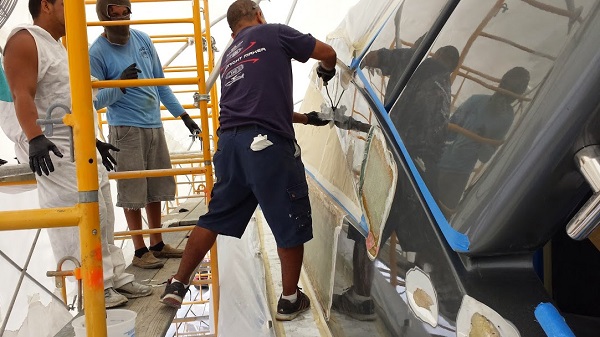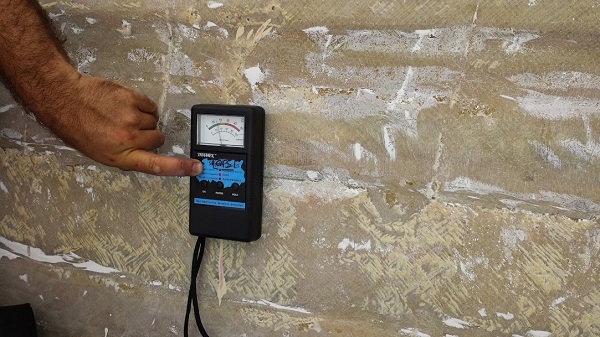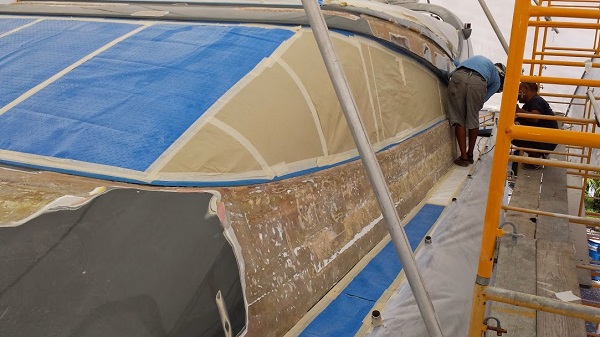Fiberglass Work

At Cachi Marine, Our Fiberglass repair technicians are trained in Fiberglass Boats construction & reconstruction of Fiberglass and Composite structural Damage.
Latest and Traditional Industry techniques are used by our Fiberglass repair staff to insure professional and Quality Repairs.
Vessel and collision and restorations, is something we do with pride.


FIBERGLASS & COMPOSITES
New technology composites are gaining larger acceptance in the Marine industry. However, damaged parts or even hulls are often replaced or totaled simply because many professionals lack the knowledge to repair them or are intimidated by the prospect of fixing them. At Cachi Marine Yacht Painting we have developed our own procedures for composite repairs, the main factors are:
1) All repairs are secondary bonds, so they rely upon the adhesive quality of the resin for their strength. Structural repair theory begins by recognizing the difference between a repair and the original piece.
2) Increasing the surface area will increase the strength and the durability of the repair. Since repairs depend upon adhesion to the primary structure, increasing the surface area of the bond line will increase the strength and longevity of the bond.
3) Strive to duplicate the thickness, density, and ply orientation of the original laminate to maintain the functionality and shape of the area under repair.
TYPES OF DAMAGES
Damage generally falls into four categories, but they can all be present if the impact was severe enough.
Tears, holes or punctures, crushed cores, and delamination are the most common problems.
COMPOSITE COSMETIC REPAIR
1) We will inspect the damage and remove any loose or unsupported surface material.
2) Prepare the surface for the addition of gelcoat or filler.
Begin by taping off the area surrounding the damage. This will keep sanding scratches around the damaged area to a minimum.
3) Mix and apply the appropriate cosmetic filler material. Shallow scratches can be directly filled with color matched gelcoat.
We will match the gelcoat to a sanded and polished portion of the original, not the overall faded color.
4) Mix and spray the color matched top coat. If gelcoat is the intended top coat, specialty additives will allow a full surface cure, reduce orange-peel and improve sanding.
5) Sand and compound the repaired area to the desired finish.
The last step of a professional cosmetic repair is polishing to a high gloss.
COMPOSITE STRUCTURAL REPAIR
1) We inspect the damage, identify the materials involved, and determine what parts should be replaced or repaired.
2) Remove the damaged material and prepare the area for bonding. Try to identify the sequence and the orientation of the material as it is removed layer by layer.
Sometimes it is difficult to realign the pieces with each other because the frayed fibers tend to “hang up” on one another. Cutting the layers relieve the stress on solid laminates, which often return to their original shape with little force. Cored parts tend to pancake and mushroom, further complicating realignment.
3) Laminate the repair patch. Begin this procedure by precutting the core replacement and the reinforcement plies that will fill the repair taper.
Mix the appropriate resin or adhesive system for the repair patch. Pre-weight and mix only the same weight of resin. This will keep the resin content within a reasonable 50:50 ratio.
Pre-wet the entire bonding area with resin, then begin saturating each ply of reinforcement before it is placed into the next step.
4) Inspect the repair before putting the part back into service. Use the coin tap method to inspect the cured repair. The entire structure should resonate the same solid sound. Non-destructive load testing can also be used in sensitive structural bonds.

